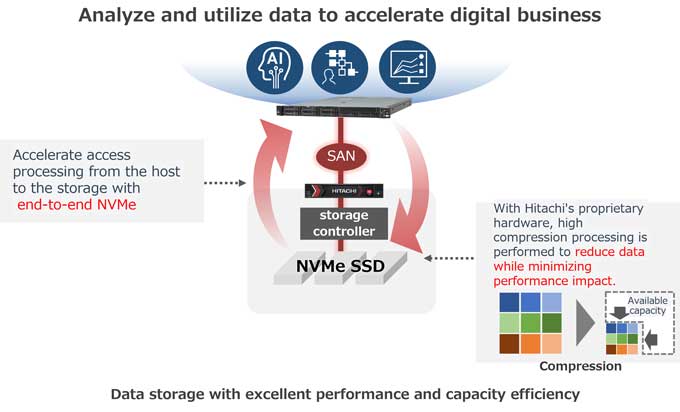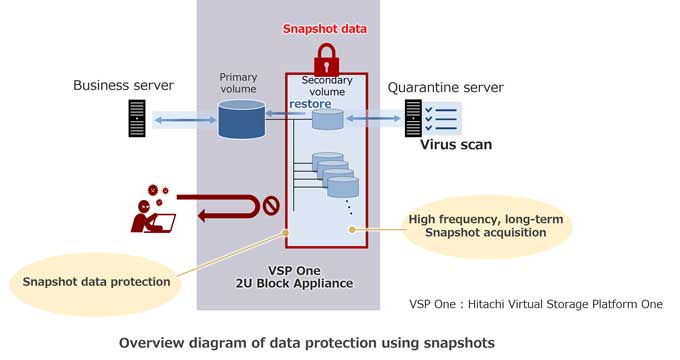NVM Express™ (NVMe™) compatible all flash array Process large amounts of data stably and quickly, and efficiently store it
We enhance data processing and improve response time in an end-to-end NVMe environment, which is ideal for SSDs. Our high-reliability storage features protect data from various risks, such as security threats, and enhance the acceleration and continuity of digital businesses. Additionally, we strive to reduce environmental impact through initiatives such as power and resource efficiency in storage, contributing to a lighter environmental footprint.
We implement a high compression algorithm on our proprietary hardware and offload data compression processing from the CPU. In addition, our data protection technology allows for expansion on a per-drive*1 basis by configuring RAID groups with any number of drives. We also support NVMe over Fabric, enabling a high-performance storage system with an end-to-end NVMe environment from the server to the storage.

With the acceleration of cloud utilization, the risk of unauthorized access, data deletion, and tampering by malicious users or malicious software such as ransomware attacks has increased. Utilizing the snapshot function*2 is effective as a countermeasure. By storing immutable snapshot data in storage, which cannot be changed, deleted, or encrypted, it is possible to promptly quarantine and restore data in case of emergencies.

Note: The information on each page of this web site is as of its publication (Sept. 2024) and is subject to change without notice.